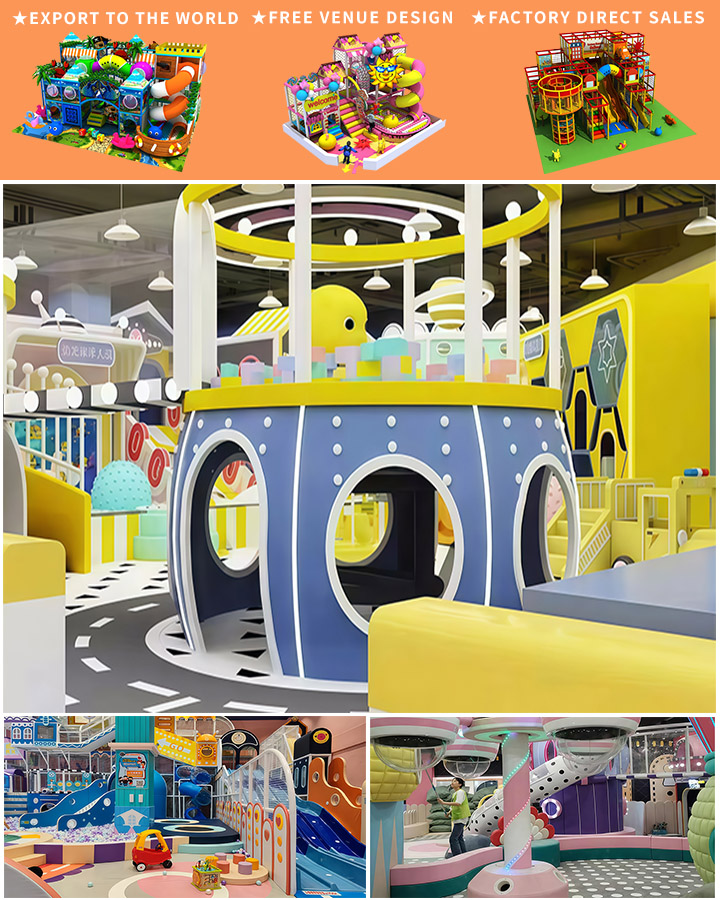In today’s fast-paced world, providing a safe and engaging space for children to play is essential. Enter the realm of indoor playgrounds, where fun meets safety through a variety of soft play equipment designed specifically for young adventurers. This article delves into the exciting world of kids’ indoor playground equipment, focusing on the importance of soft play areas in creating dynamic, safe, and entertaining play centers for children.
Understanding Soft Play Equipment
Soft play equipment refers to a range of cushioned, lightweight, and non-toxic materials used to create a safe environment for children. Unlike traditional playgrounds with hard surfaces and metal structures, soft play areas are designed to minimize injuries through their padded nature. These spaces often feature colorful foam shapes, ball pits, climbing frames, and tunnels that encourage physical activity and imaginative play.
Key Components of Soft Play Equipment
- Foam Cushioning: High-density foam serves as the backbone of any soft play area, providing impact absorption. It’s lightweight yet sturdy, ensuring both safety and durability.
- Climbing Frames: Soft climbing walls and frames allow children to develop their motor skills while having fun. These structures are typically covered in soft fabric to prevent slips and falls.

- Slides and Tunnels: Sloped and tube-like structures add elements of surprise and excitement to indoor play. Made from soft, flexible materials, they ensure a smooth glide without the risk of abrasions.
- Ball Pools: Filled with thousands of plastic balls, these pools provide endless entertainment for kids. They’re not only great for jumping in but also aid in developing balance and coordination.
- Interactive Elements: Many modern play centers incorporate interactive features like sensory walls, digital games, and obstacle courses, enhancing the overall experience.
Benefits of Soft Play Indoor Children’s Playgrounds
The concept of indoor soft play areas has gained immense popularity among parents and caregivers alike, and for good reason:
- Safety First: The primary benefit of soft play equipment is safety. Padded surfaces and rounded edges significantly reduce the risk of injury compared to conventional playgrounds.
- Weather Independent: Unlike outdoor playgrounds, indoor soft play areas offer year-round fun, unaffected by weather conditions. This ensures consistent access to physical activity for children.
- Social Development: These play centers are social hubs where children can interact, learn sharing and cooperation skills, and make new friends in a structured yet informal setting.
- Physical Exercise: Engaging in active play helps improve children’s physical health by promoting muscle development, flexibility, and overall fitness.
- Mental Stimulation: Soft play environments often stimulate creativity and problem-solving abilities, encouraging imaginative play and exploration.
Design Considerations for an Indoor Play Center
When designing or selecting soft play equipment for an indoor children’s playground, several factors come into play:
- Age Appropriateness: Ensure the equipment suits the age group it’s intended for, with separate zones for toddlers and older kids if necessary.
- Accessibility: The layout should be easily navigable, with wide pathways for wheelchair access and supervision from all angles.
- Maintenance: Choose high-quality materials that are easy to clean and sanitize regularly to maintain hygiene standards.
- Customization: Incorporate custom themes or educational elements to enhance the play experience and cater to diverse interests.
In conclusion, indoor soft play equipment offers a world of possibilities for fun, learning, and growth within the safety of an enclosed space. As we continue to prioritize child wellbeing, these innovative play centers serve as vital platforms for nurturing healthy, happy, and resilient future generations. So next time you’re looking for a place where your little ones can laugh, learn, and explore, remember the wonders of a well-designed indoor soft play area.




